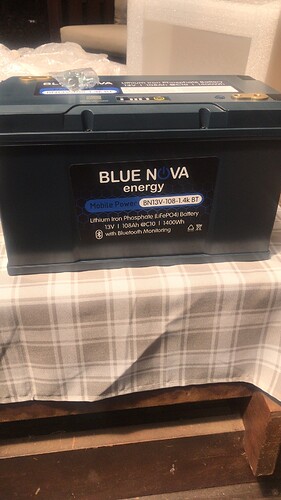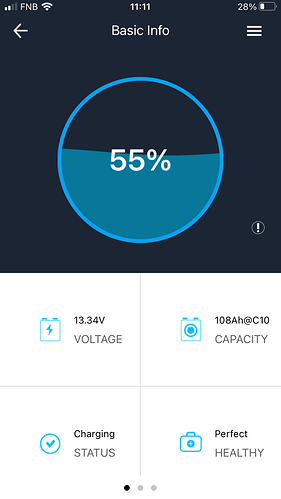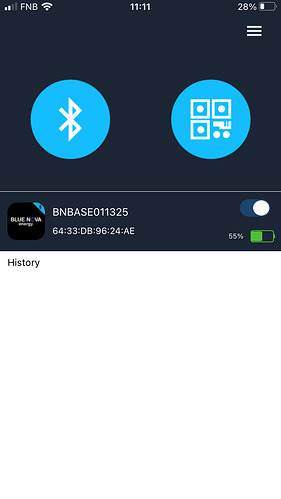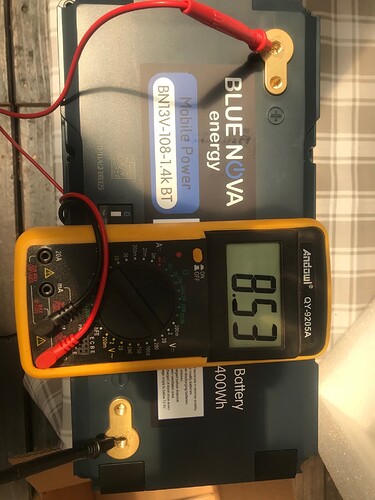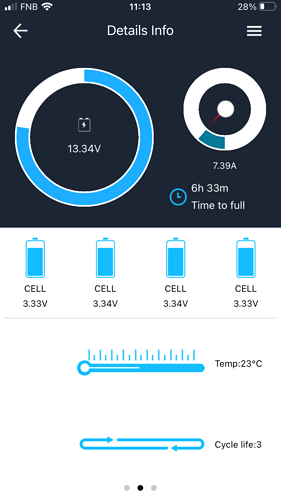I would be hesitant to recommend Hubble at this stage…
For the sake of comparing apples to apples, just also keep in mind that those Hubble’s use second life cells.
Well, it is a LFP hubble… which makes me a little less hessitant. But second-life at 6k when you can get new at around 8k (when they go on special), I’d go new…
Something a 2nd Life supplier told me once. 2nd Life cells are tried and tested, as the lower quality cells have been discarded already.
And the guy who told me was not based either, he preferred to buy new himself.
If the warranty and cycles are the same on 2nd Life and new, and one can save a few rands on 2nd Life, why not.
But I’m not the norm. Keep that in mind.
As suspected, Ctek is not very forthcoming with information.
I specifically asked them if the D250S uses volts to determine how far and if the battery is being substantially discharged and to give me these parameters (if any) and indicated that I’m concerned because of the flat voltage discharge curve.
Their answer:
Dear Sir,
Be aware of you need a new lithium compatible charger D250SE.
D250S Dual works only with lead acid technology.
Med vänliga hälsningar/Best Regards,
Mikael Magnusson
Dude, just tell my why you say so. I indicated in my response that they may give me a technical explanation, which you guys may help to interpret for me when I fall out of the bus.
Unless there is a shunt involved… it uses voltage. Every charger works like that. It has a so-called “re-bulk” voltage, when it decides it is time to switch from absorb/float back to bulk and give it all the beans to get it back to “full”. As long as this voltage isn’t higher than the LFP can handle, and as long as you disable all sorts of Equalisation options (if the charger has that), a don’t think there will be a problem.
Again, these batteries are designed to be drop-in replacements for lead-acids.
I have never seen my C-Tek done more than 14,4V when charging. And there are no settings or even buttons. Pure dc2dc unit.
Had a quick look at the newer model that can do lithium batteries. It says this new unit has a selectable input for lithium and lead acids
Output
14.4/14.7 V, 20 A, lead-acid battery types. 14.2 V, 20 A, LiFePO₄.
So it gives a lower output voltage of 14.2V. But if the Nova can handle 0.2V more, I suppose this should be fine?
I bit the bullet and bought the 108Ah Blue Nova this morning, the one with Bluetooth.
Will provide feedback here once it arrives and once I’ve made up my mind whether to extend my wires, or whether I must try and construct a battery box with both poles on the same side.
I figured, I have a 90L National Luna fridge that I love and use quite often, which resides permanently in the vehicle. So I want a good battery for it or the unit is not being used to its full potential.
But it becomes very pricey now to keep beers cold if you add the value of the fridge…
Three words. Drop. In. Replacement. Yes, it can handle it. It can handle 15V, but then you’re at 3.75V per cell ![]()
What I do advise, is first take the battery up to 14.4V manually, on the bench if possible, to make sure the BMS does not intervene (ie, that everything is well balanced in internally). Because at 14.4V, we are talking 3.6V per cell which is not all that low…
I will borrow an AC lithium charger somewhere from someone. Or can I attempt this with my normal smart charger? But obviously by monitoring it constantly until it shows 14.4 on the multimeter?
Normal charger should be fine. I’m thinking more of installing it in the vehicle and THEN finding out there is an issue, and then having to haul it out again.
Good thinking, thanks.
Are the companies that supply Li-Ion battery packs all local?
I’m referring to the likes of: BlueNova, Hubble, Pylontech, Freedom Won, Lithium Batteries SA etc.
All of those are local except for Pylontech, which only has redistributors in SA.
Hi all. Some feedback.
Took delivery of the BlueNova this morning and as per their instructions (if the battery is less than 13V I should recharge it)
Multimeter showed it to be 8,53V - which gave me a little heart attack (being used to lead acids). But still this seemed unusually low. I did send Sustainable an email to enquire about this, just to be safe.
So I downloaded the app and did the Bluetooth thing. SOC reflected 55% Could my meter be faulty? I know about the very flat discharge curve but could the voltage drop that low?
Other picture shows all sorts of usual info, even the cells individual voltages!
Charging instructions even mentions that I could use a lead acid charger, provided some precaution is taken (just like Plonkster advised) such as not charging at more than 15V, not using the normal stages like desulphation etc
My Midas PS008 does 7 amps at around 13,8V so I should be good. Been climbing steadily and I’m now on 62%
Very happy so far. The weight (probably less than half my 150Ah lead acid) and the greater useful range will be awesome and cant wait to try it. Camping trip coming up on 11 March but I’ll give it a good workout before then.
What price did you pay in the end? Looks a good option!
Seems lie 2.13v per cell, if there are 4 cells in there?
One cannot ship fully charge Lifepo4’s cells, must be at least 50% SOC, in case of drama.
R9725.00 which included Vat and delivery, the latter being something like R273.00
Yes 4 cells. But as per pic above, the cells were at 3.34/3 when I started charging.
Multimeter maybe not up to scratch but I don’t really think so. It is spot on with my more expensive one. Pity I didn’t connect it as well to compare.
